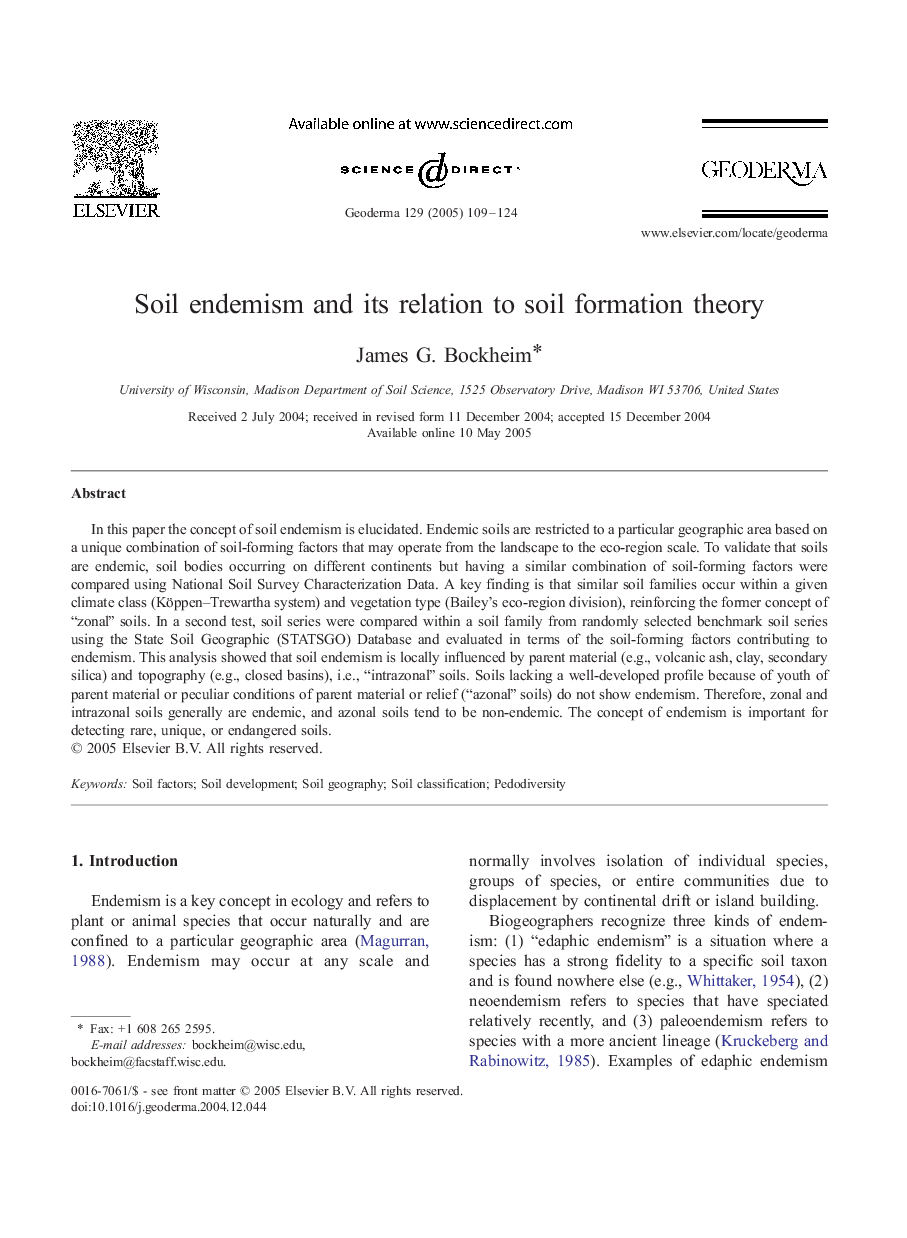| Article ID | Journal | Published Year | Pages | File Type |
|---|---|---|---|---|
| 9490390 | Geoderma | 2005 | 16 Pages |
Abstract
In this paper the concept of soil endemism is elucidated. Endemic soils are restricted to a particular geographic area based on a unique combination of soil-forming factors that may operate from the landscape to the eco-region scale. To validate that soils are endemic, soil bodies occurring on different continents but having a similar combination of soil-forming factors were compared using National Soil Survey Characterization Data. A key finding is that similar soil families occur within a given climate class (Köppen-Trewartha system) and vegetation type (Bailey's eco-region division), reinforcing the former concept of “zonal” soils. In a second test, soil series were compared within a soil family from randomly selected benchmark soil series using the State Soil Geographic (STATSGO) Database and evaluated in terms of the soil-forming factors contributing to endemism. This analysis showed that soil endemism is locally influenced by parent material (e.g., volcanic ash, clay, secondary silica) and topography (e.g., closed basins), i.e., “intrazonal” soils. Soils lacking a well-developed profile because of youth of parent material or peculiar conditions of parent material or relief (“azonal” soils) do not show endemism. Therefore, zonal and intrazonal soils generally are endemic, and azonal soils tend to be non-endemic. The concept of endemism is important for detecting rare, unique, or endangered soils.
Related Topics
Physical Sciences and Engineering
Earth and Planetary Sciences
Earth-Surface Processes
Authors
James G. Bockheim,
